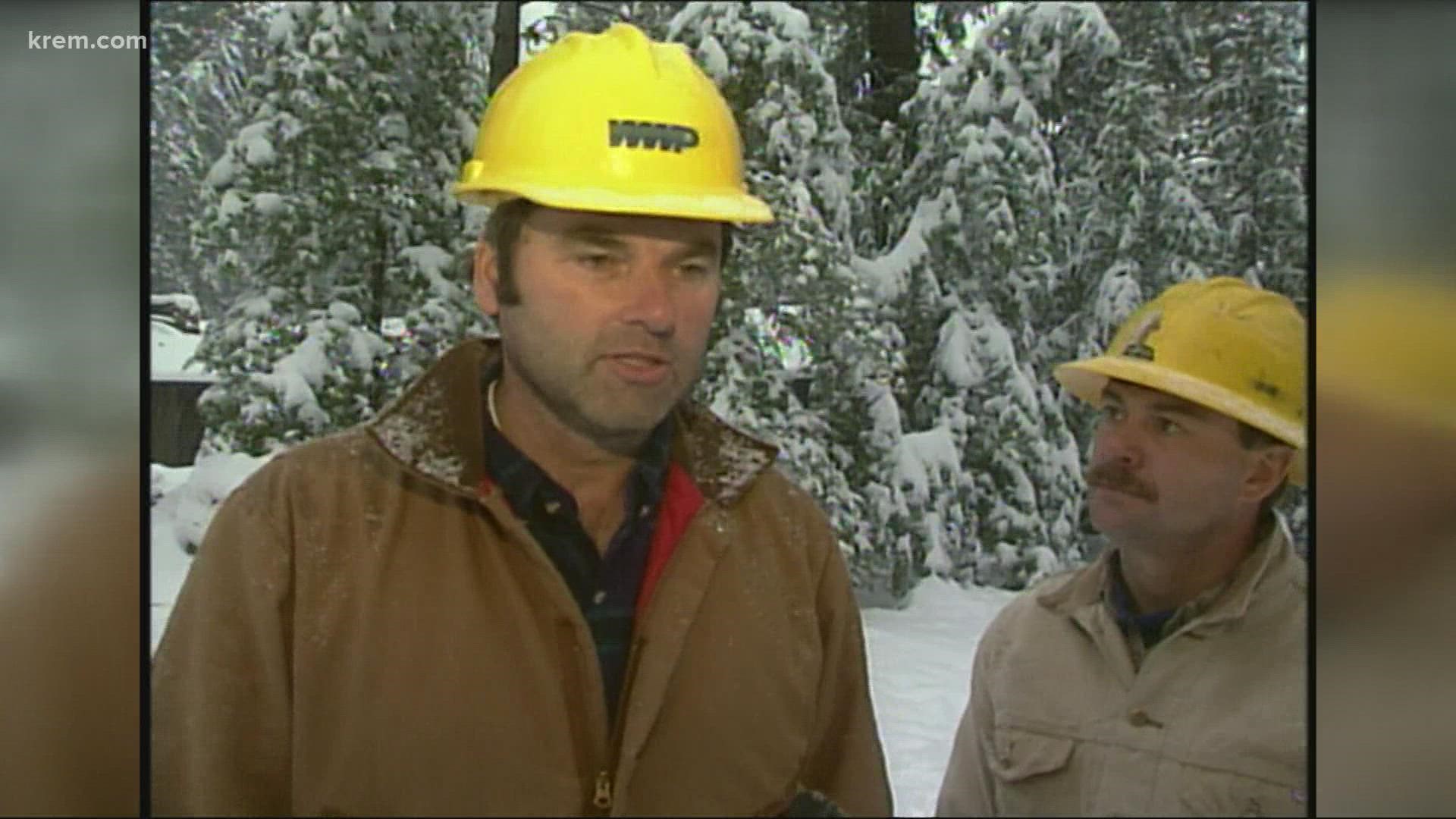SPOKANE, Wash. — Nov. 19, 1996 is a date that is likely frozen into the minds of many longtime Spokane residents. Friday marks the twenty-fifth year since one of the region’s worst ice storms.
The National Oceanic and Atmospheric Administration says the day began with two to four inches of snow already on the ground throughout the city. Later that day, up to 1.5 inches of freezing rain fell in the area, coating trees, roads, buildings, vehicles and power lines.
The high temperature at the Spokane International Airport was only 33 degrees and 1.24 inches of precipitation in the form of rain, freezing rain and drizzle, snow and mist fell there. Freezing fog was also spotted in the area.
Trees came crashing down in the city under the weight of the ice, leaving more than half of Spokane’s residents without power. The mayor declared a state of emergency amid the widespread outage.
One hundred thousand people countywide were without power three days after the storm, while 20,000 people were without power six days after, according to NOAA. Some residents were without power for up to two weeks after the storm.
In October 2019, tens of thousands of Spokane residents were left without power after about four inches of wet, heavy snow caused tree branches to break off and fall into the roads and on power lines. Fallen tree limbs also left some roads impassable.
Four people died during the 1996 ice storm in Spokane and Kootenai Counties, and damages were estimated at $22 million in 1996 dollars, NOAA said. The storm remains one of the worst on record for the area.
Ice storms are the result of freezing rain, which initially develops in the form of snow well above the ground, according to the National Weather Service. As they fall, snowflakes pass through relatively warm air that is deep enough to cause them to melt and fall as rain.
As rain continues to fall, sub-freezing temperatures just above the surface rapidly cool the droplets. Once these cooled rain drops strike objects where temperatures are below freezing, they freeze instantaneously.

